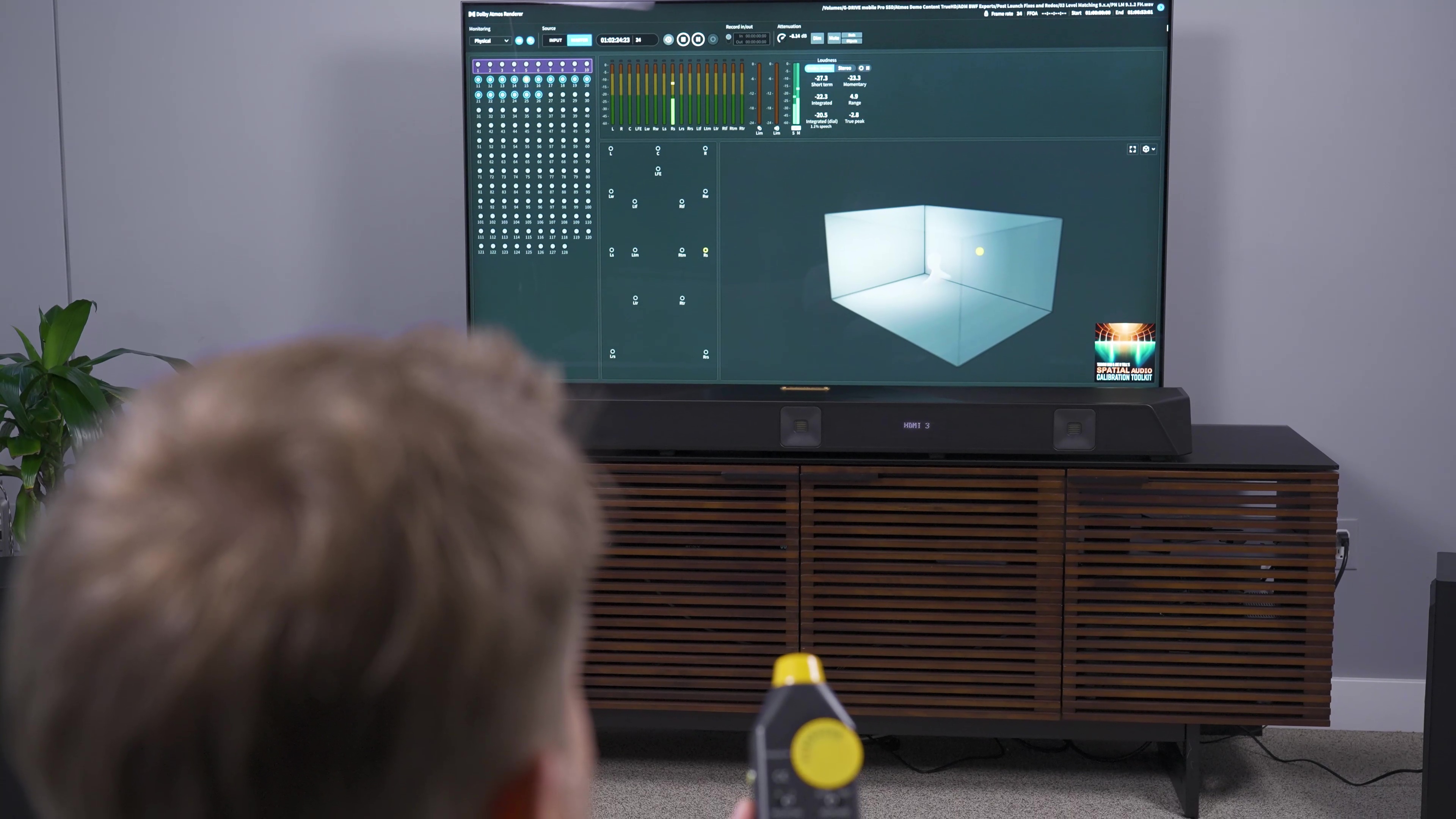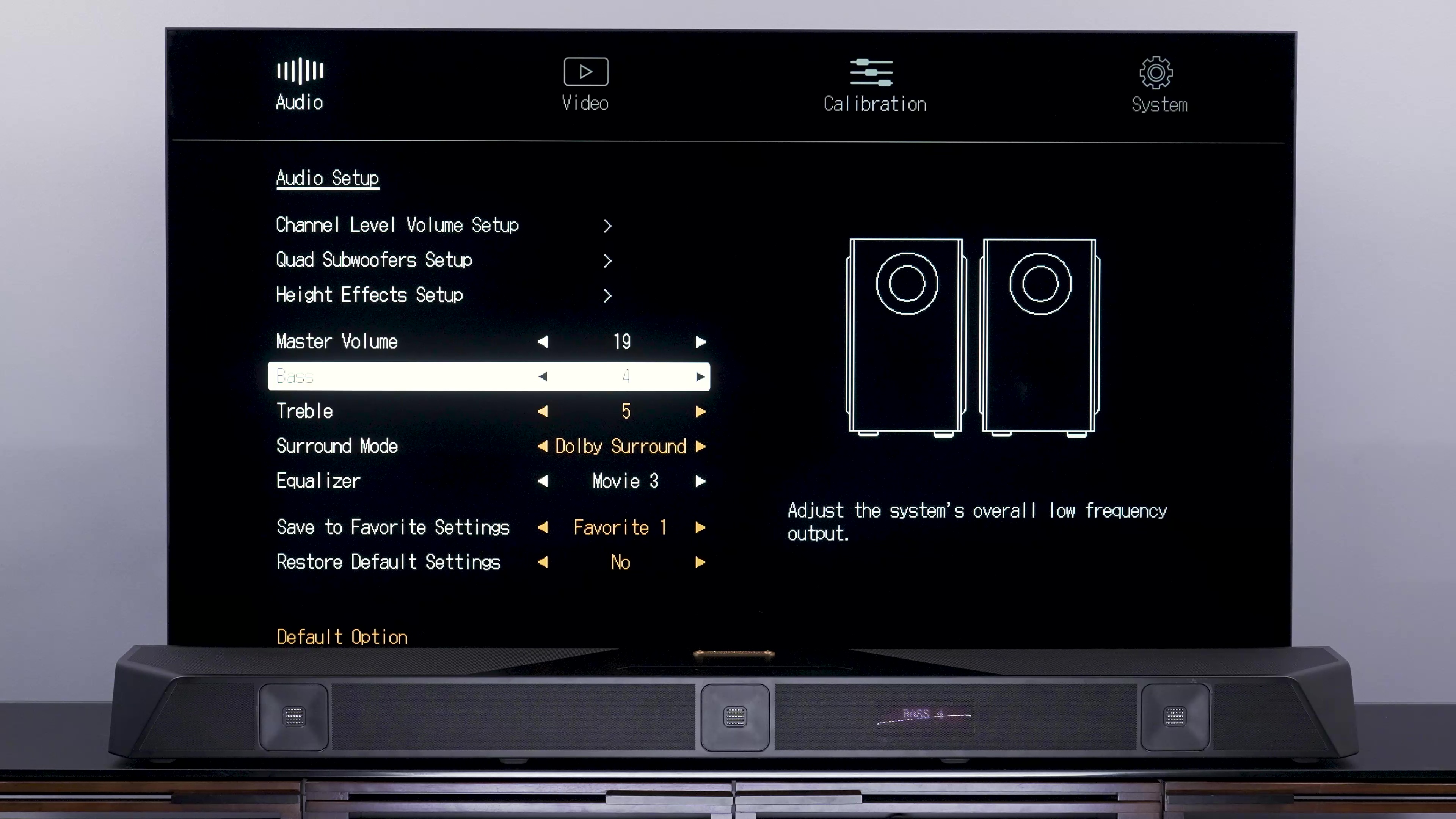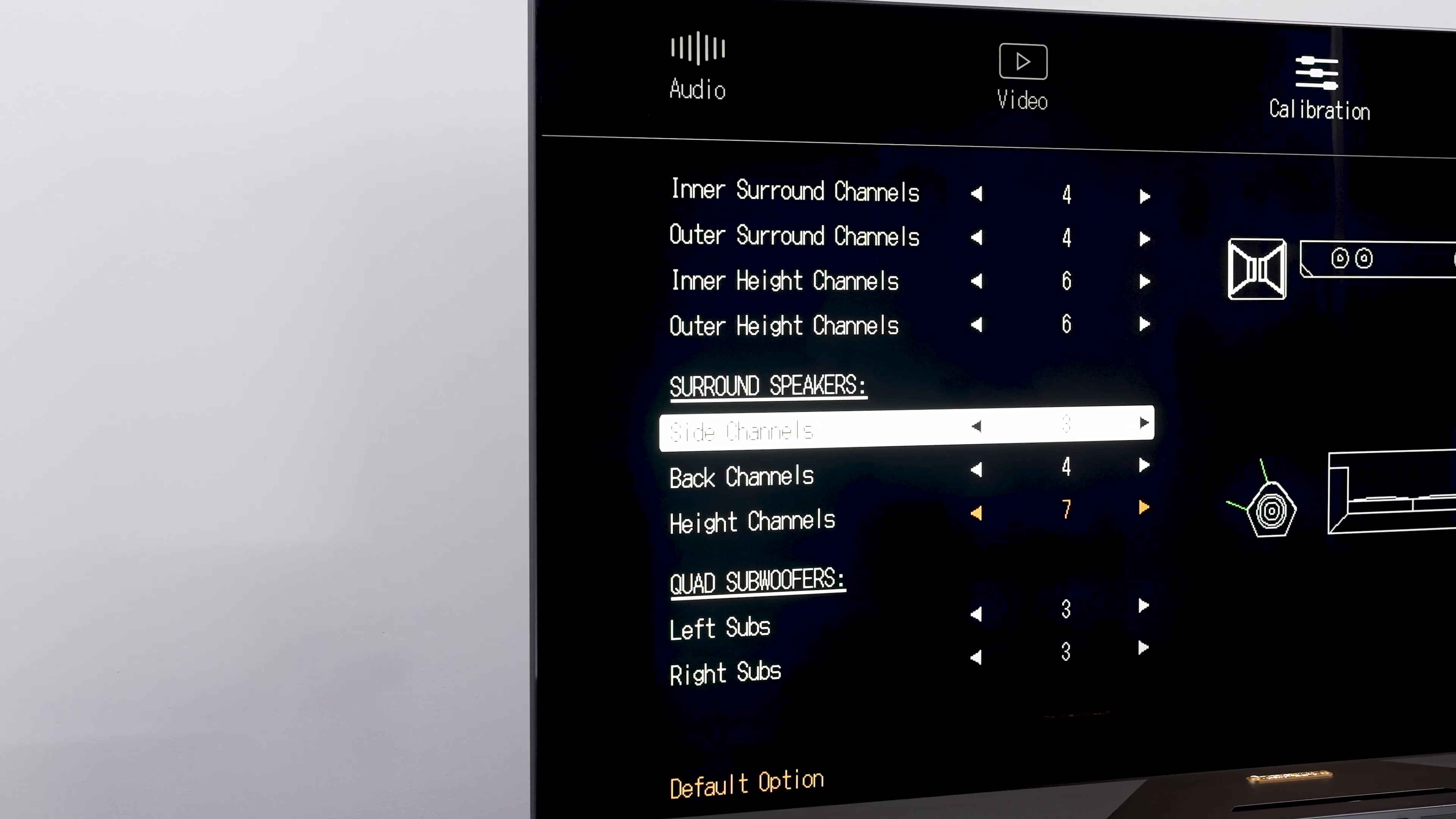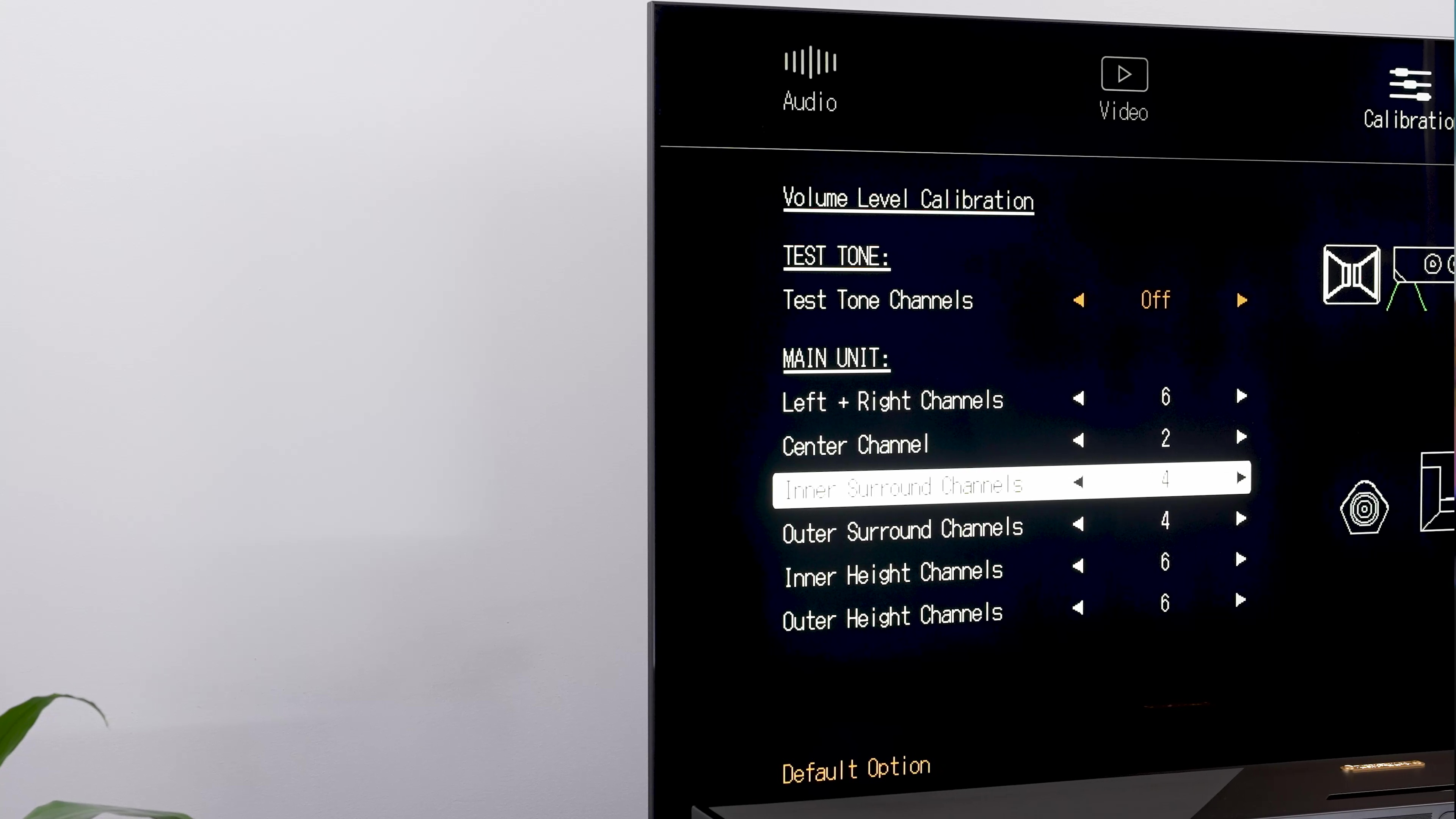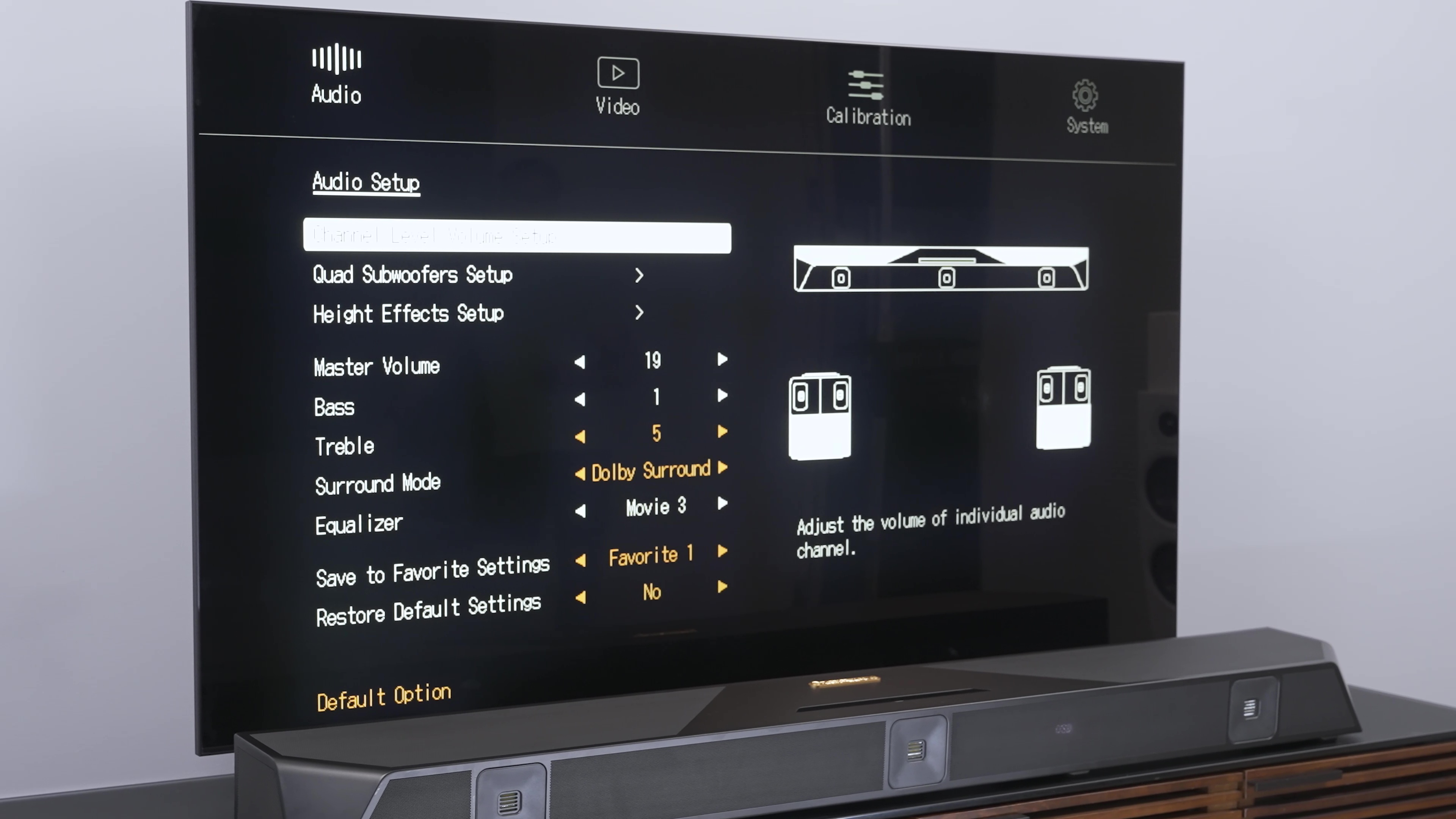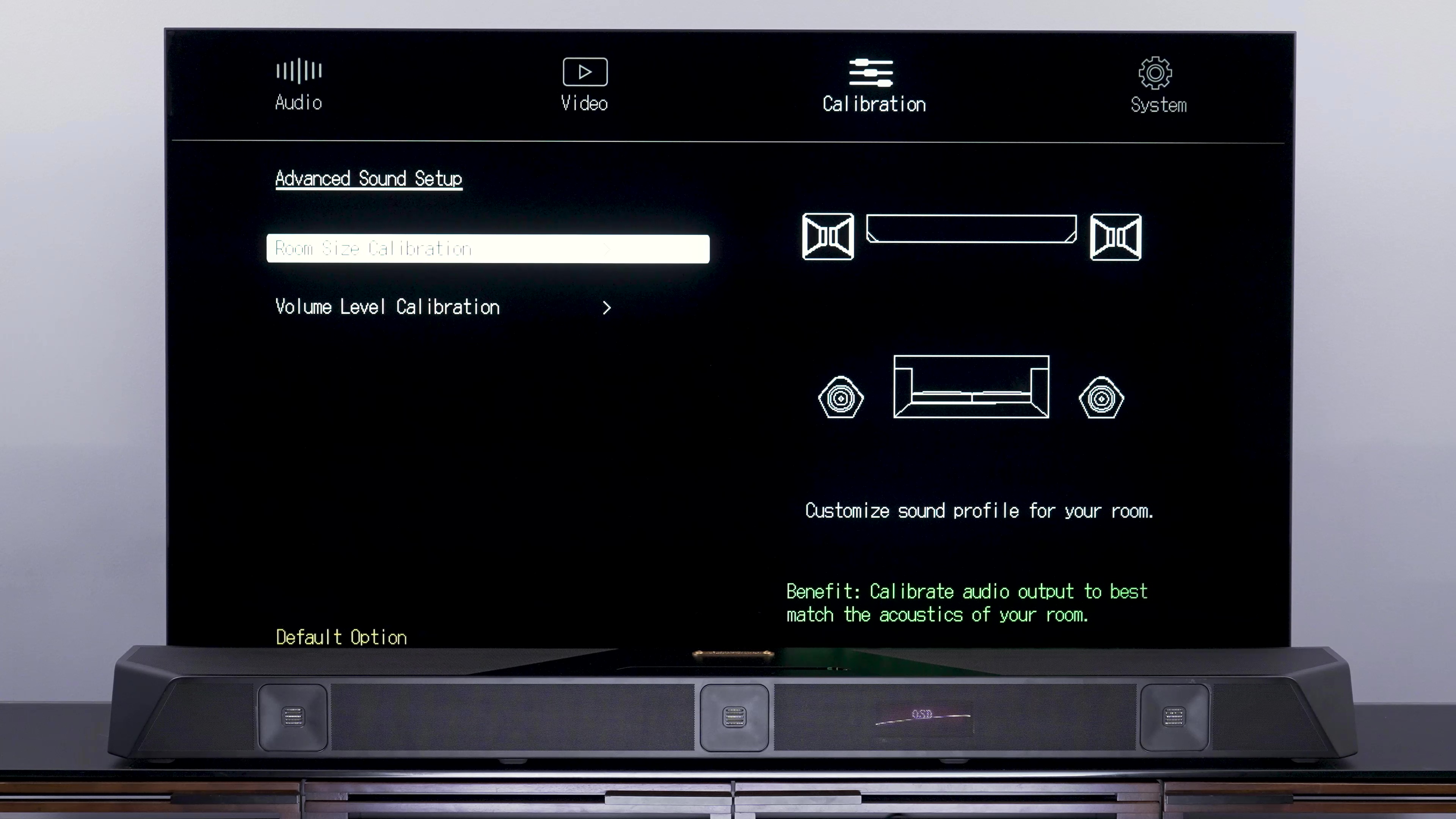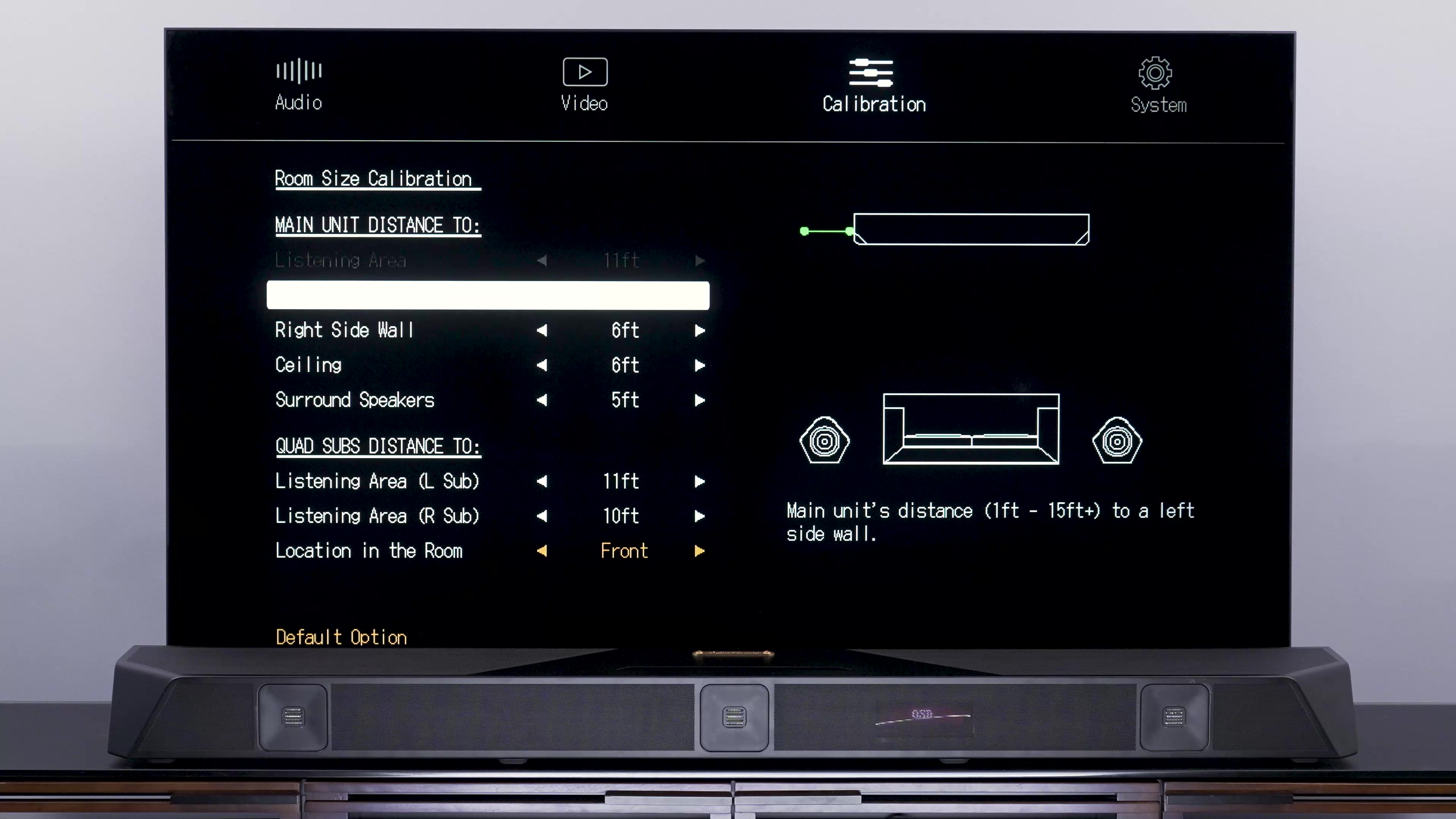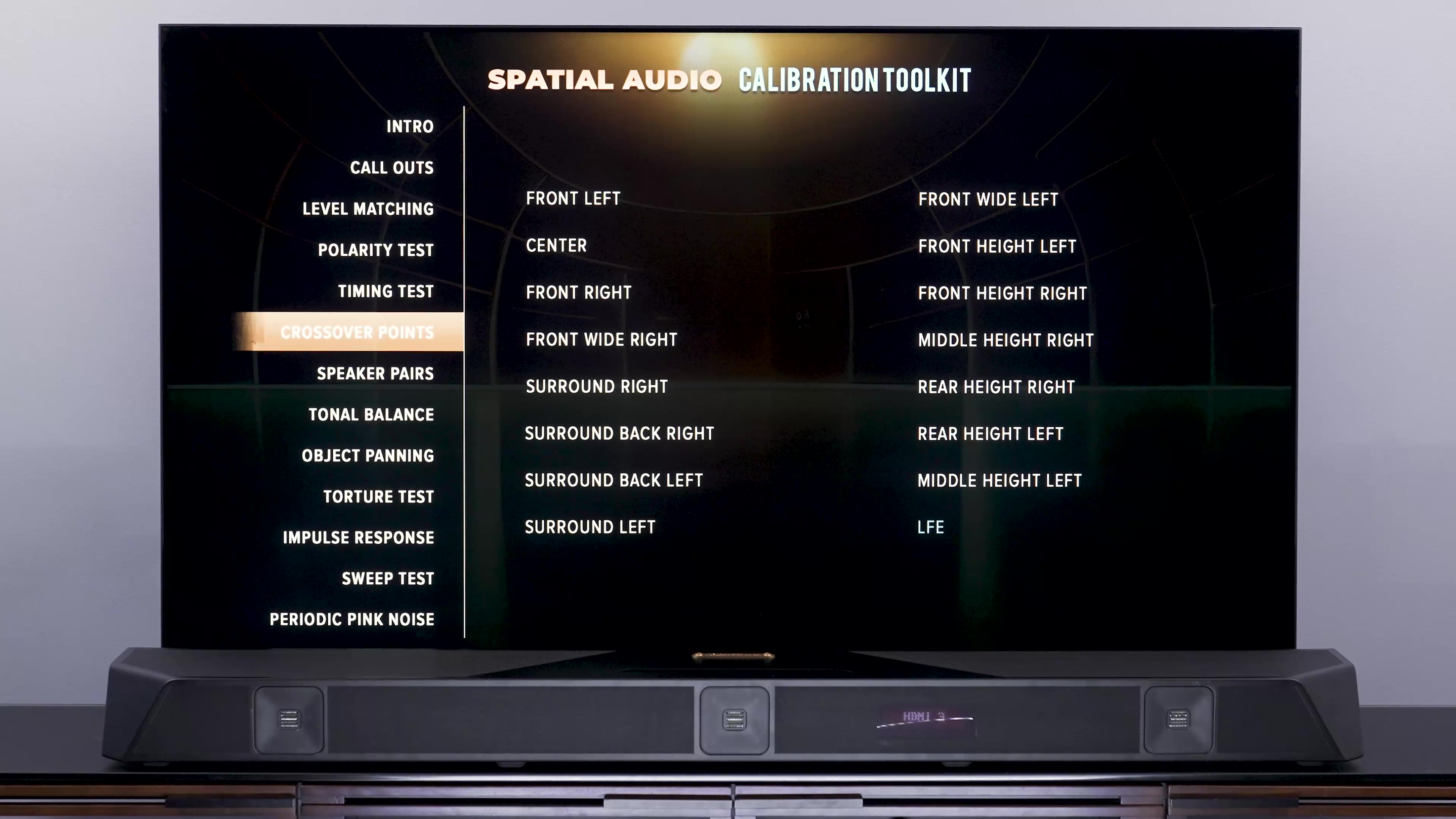- Supremely clean highs
- Crystal-clear dialogue
- Massively powerful
- Seamless surround effects/object placement
- Ridiculously fun
- Lack of separate LFE and bass control
- OSD could use better integration
I spent days in my lair with the Nakamichi Dragon, and now it’s time to find out if this beast really does spit fire — or if it’s just blowing smoke.
I’d love to say that’s the end of the bad dragon puns, but I can’t make that promise.
What we’re really here for is a deep dive into the Nakamichi Dragon, a massive soundbar-inspired Dolby Atmos/DTS:X surround system that makes every effort to offer performance as convincing and high-fidelity as that of an AV receiver and speaker setup, but without all the speaker wire or a good deal of the hassle.
The Dragon is without a doubt the most over-the-top home theater-in-a-box I’ve ever seen, and I know that it aims to live up to the legendary Dragons that preceded it. For some of you, that conjures up memories of the Dragon cassette deck. For others, maybe it’s the Dragon laser-tracking turntable.

The Nakamichi we have to thank for this Dragon system isn’t the same as the Nakamichi from decades past. But that doesn’t mean that today’s Nakamichi isn’t 100% committed to reviving the spirit of the Dragon developed by those who came before. I’ve spent a lot of time talking to these folks, and their dedication is impressive.
And it has to be because this monster of a sound system is really a bear to make. If you want to know a little more about Dragon and watch me unbox it, we have a video of that, but go watch it later, because right now, we’re going to get into as comprehensive a review as I know how to make.
Video review
Connections
Let’s start with the connections. You get three HDMI inputs and one eARC port, and, don’t worry, they are full-on HDMI 2.1 ports, so you can pass anything you want through the Dragon. Dolby Vision, HDR 10+, VRR, 4K 120, 8K 60, whatever you like. I tested it, and it works.
There also are optical digital-in and digital-out ports, and an aux port. But if you aren’t using HDMI to connect to the Dragon for movies and TV, well, then you aren’t getting what you paid for, and I just wouldn’t bother. Optical is nice for some side-piece devices, but definitely use HDMI for your game console, Blu-ray player, or just your TV.

Speaking of which, you can connect anything you want directly to Dragon and then run video out to your TV. But for most of my evaluation, I connected devices to the TV and ran audio down through the TV’s eARC port.
What’s inside (a lot!)
Inside the main unit are 14 drivers powered by seven digital amplifiers, all housed in a steel chassis with custom ventilation. Honestly, the design of this thing is staggering.
In each surround speaker, you get five drivers, and in each subwoofer, you get two 8-inch subwoofer drivers. The total system power is claimed to be 3,000 watts, with peak output at a blistering 125 decibels.
Setup and calibration
The Dragon offers an on-screen display (OSD) that allows you to control just about everything you could possibly want to control. For me, the most important areas here are the Audio menu — specifically the audio setup and advanced audio setting sections — and the Calibration menu.
The Dragon has been designed so you don’t necessarily have to go into its menu and monkey around. Not much, anyway. A lot of the controls you’re likely to want are on the remote. You can select a room-size option and then try different sound EQs for music, games, and movies. There’s also a night mode to keep explosive moments from waking up, say, an entire city block. Or you can turn all that stuff off and go pure.

You also can cycle through some surround modes, or between Stereo and All-channel Stereo.
But if you want the very best sound from the Dragon system, you should grab a tape measure, pick up your phone, download a decibel meter app, and do a little bit of work. Frankly, I find this sort of thing fun. But even if you don’t, just get into it and get it done. There are a lot of options here, and they aim to help folks get great sound no matter what kind of personal preferences or room characteristics they have going on.
I went ahead and used the built-in test tone generator and a dB meter to calibrate the levels of each and every channel of this system right after I input the correct speaker distances.
This is where I’ll point out one opportunity for improvement in the Dragon: I would like to see independent LFE channel and Bass controls. The LFE channel is a special low-frequency effects channel that’s encoded in Dolby and DTS surround sound tracks. It’s mostly there for big, deep, explosive effects. The LFE channel has nothing to do, however, with the bass that needs to be produced by the other speakers in a surround system. And in this case, the 3-inch drivers in the main unit and surround speakers aren’t meant to produce much bass. They start to roll off at about 160Hz or so. That means that the subs will pick up the bass that the main unit and surrounds can’t produce.
The problem is that the bass level and the LFE level are not individually controllable. It didn’t turn out to be a huge problem for me in the end, but that’s the kind of control I would expect to see on a system of this caliber and one that otherwise behaves very much like an AV receiver.
Spatial Audio Calibration toolkit
And that leads me to the Spatial Audio Calibration disc, made by YouTubers TechnoDad and JoeNTell. This is a disc that we have needed for many years now, and I’m so glad it is out. With it, I was able to determine the roll-off point of various speakers in this system, as well as fine-tune the levels of all the speakers — especially the front height, front wide, and rear height channels — to perfection.

Dolby Atmos as implemented in movies is all over the place, but the Spatial Audio Calibration disc is consistent and predictable and measurable, and I leaned heavily on it for this review.
Next, let’s get into sound quality and surround sound quality. And let’s do that in three subsections, one for movies, one for TV, and one for music.
Movies
Sound quality and fidelity
The thing that I noticed first about the Dragon was the center channel clarity and fidelity. I have stretched my memory back as far as it goes and I am quite sure that I have never heard any soundbar with dialogue clarity and fidelity anywhere near as good as what the Dragon puts out. I think a big part of the credit for that goes to the use of AMT tweeters. These folded tweeters use compression to generate sound, and they are extremely articulate. That means that not only is the treble in sound effects remarkably clean, but every sibilant, every transient, and every little mouth noise is reproduced with startling clarity. It brings to mind an extremely expensive Martin Logan Center channel I once heard.
The next thing that I noticed was how well the subwoofers were integrated with the soundbar to paint one unified sonic picture. I know how much duty these subs are picking up. They are reproducing parts of the frequency spectrum that you normally would not want a sub to handle. I know how much they are doing because I turned them off and listened to the Dragon on its own, and the subs are picking up a lot. But outside of when there were big bombastic sound effects or really deep bass notes, I wasn’t aware of the subwoofers doing anything in particular because they blended so well with the rest of the system. That is rarely the case with soundbar systems, so I consider that a big achievement worthy of serious praise. So, here it is — I praise thee, Nakamichi.
The Dragon is just light-years ahead of any soundbar-based system.
Now, as for fidelity, or sound quality, the Dragon sounds excellent. It is a total powerhouse. There isn’t a single soundbar surround system I’ve ever tested that can touch its overall performance. (If you sense a caveat there, you’re right, and I’m getting to it.)
The Dragon is just light-years ahead of any soundbar-based system. The only one that may give it a challenge in some ways is the Sonos Arc mated to two Sonos Subs and two Era 300 speakers.
There are two main reasons the Dragon excels. One is surround sound continuity. The other is pure sonic fidelity. This soundbar doesn’t do anything wrong — that is, nothing stands out as bad. There’s no harshness, there’s no thinness, there’s no compression, no honkiness, no shoutiness. There’s no cheap bass bloat. Every soundbar system I’ve ever listened to, save perhaps the Sonos Arc and Sennheiser Ambeo, suffered from at least one of those — and usually more.

For me, the fact that the Dragon doesn’t do any of those things is an instant win. And then pile on top of it that it yields excellent detail, dynamics, crunch, punch, and natural-sounding voices? This is the kind of sound you typically have to purchase a decent A/V receiver and high-quality speakers in order to achieve. And if you don’t get the right speakers, then you are likely to run into some of those sonic mishaps I just listed.
Surround performance
In terms of surround performance, the sound field is remarkably contiguous. Now, not every movie is mixed especially well. Just because it’s in Atmos doesn’t mean it’s going to dangle sound objects from every corner of your room. But I did enough auditioning with a wide enough array of movies that I heard a little of everything.
Some examples. At about 49 minutes into Star Wars: Episode VII — The Force Awakens, we meet Snoke, who is in one nightmare of an echo cave. And when Snoke speaks, that reverb fills the whole room on a good system. The Dragon had the echoes coming from everywhere. Above, to the side, behind, and in front.

Furthermore, specific sound object locations had pinpoint placements, especially from the main unit, which has a way of casting sound objects well beyond its borders to points in space off to the side where, obviously, there are no speakers.
Sounds from where speakers aren’t — that’s what the Dragon does. And it is dazzling. A great scene to show this off with is another from The Force Awakens, at about 1 hour 16 minutes in, when Rey is sneaking through the forest. There are forest animal sounds all around her, as well as other sounds, real and imagined. Just before Kylo Ren shows up, there is a real showcase of object placement. It sounded awesome with the Dragon.
Television
For TV, you can repeat everything I said above. A lot of “TV” these days is really the same quality as movies. The Mandalorian, for instance, sounded just as good as The Force Awakens — can you tell I spent time on Disney Plus?
The one thing I will mention with regard to more conventional TV is that the Dragon got dialogue intelligibility right with just about every show I watched. Frasier, King of the Hill, Family Guy, Judge Judy, Judge Joe Brown … all the judges.
My judgment? The dragon slays TV.
Music
Sound quality and fidelity
Now, for music. This is the most crucial test of a sound system’s fidelity, because music gives you a real opportunity to latch your ear on to stuff that’s very familiar, and those sounds are sustained. You can take your time with analysis. I think that’s why pulling off music well is harder than pulling off flash-bang movie content.
I’ll start by saying that with all four subwoofers active, the Dragon has got … booty. A little junk in the truck, ya know? I apologize if that sounds crass, but that’s really the most apt description I can think of. There’s a thickness to the midbass that doesn’t sound like bloat — it’s just a little meatier. It’s not unpleasant — I can see a lot of folks digging it, actually. But we’re not talking about a neutral sound. There’s some coloration here for sure, but in this case, it doesn’t sound like the product of poor design or poor voicing.
It sounds more like sonic character than it does a flaw, if that makes sense. It’s something you will hear in movies as grunt. But in music, it adds a sort of 1970s sealed KLH cabinet speaker sort of thunk. And I don’t hate it! Though I do have to admit it does remind me a little bit of the cabinet resonance I heard with the Monolith Encore T6 from Monoprice.

If you’re still having a tough time imagining what I mean, go listen to Vulfpeck’s Disco Ulysses and pay attention to the kick drum and bass in that cut. The sort of sonic signature you hear in that song is how the Dragon treats almost all the music that it plays. And I know a lot of you are going to be into it.
That sound, however, is not my cup of tea. At first, I thought that’s just how Dragon was going to sound for music. As I had for movies and TV, I played with the bass setting, adjusted the crossover point down, went through all three music EQ modes, and even tried some of the movie and game settings. The sound I just described persisted. But then, I remembered I could turn some of the subwoofer drivers off. So, I turned off the two outward-facing sub-drivers, leaving one in each cabinet active, and folks, that was it. Everything snapped into focus for me. The bottom end was a bit more lean, but still plenty mean. The depth was still there, but the meatiness and boxiness were gone. I was so pleased.
Surround performance
There’s no getting around the fact that the sound seems to come from the soundbar when you’re in the native mode. That’s where just the front left and right channels are active, with no surround up-mixing involved. The sound has some height, and it has pretty great width, with that pinpoint center image I mentioned, but it stops short of being a wall of sound in the native mode. For that, you’ll need to engage the studio mode, which does fake surround sound. It uses some of the height drivers to fatten up the sound coming from the main unit, but the surround speakers are also active.

I tended to prefer the native mode with all of my dialed-in settings. So for music, I saved my settings to the favorite No. 1 spot on the remote, pressed that any time I was listening to a stereo music source, and it worked great!
But for you, whether you’re listening to music or movies, I want to come back to the idea that you should really play around and customize Dragon to sound the way you like best. And it’s got everything you need to make that happen. Take some time. Try out all the EQ options. Try no EQ. Try no DSP. Try all-channel stereo, then compare that to the studio setting for music. Play around — I’m pretty sure you’re going to find a setup that you like a lot. And when you get that ideal setup for movies, and one for music, save them as your “favorites.” This will give you one-button access as you switch between content types. Because, well … here’s where we come to my few criticisms of the Dragon.
Quirks and cons
The menus offer a lot to wade through. And it can really take some time to open up the OSD, navigate around, make a change in the selection, and then … well, here’s where we meet one of my chief complaints.
I wish the OSD and menu were a transparent overlay and didn’t stop content from playing when you pulled it up. One of the best ways of figuring out whether you like the Music 1 or Music 2 EQ best, for example, would be to switch between them quickly and do an A/B comparison. You can’t do that with Dragon, and that’s a bit of a bummer.

Also, once you do make a change, you will need to pull out of the menu. And when you do, signal acquisition takes a second. You have to wait for the sound to come back. So, if you switch sources, pause and restart, scrub forward or back, or go into the menu and come back, you’ll have to wait a moment for the sound to start.
My final complaint so far is about the lack of dedicated LFE adjustment, but I covered it already, so I won’t belabor it.
The value proposition
Editor’s note: Shortly after this review published, Nakamichi announced the price of the Dragon system was increasing from $3,500 to $3,900. The following has been updated with that price increase taken into consideration.
Look, I could go on and on. I know I’ve had to leave some deep details out, but I want to get to the value proposition. It might sound odd to bring in the real-world value when we’re talking about a system that now starts at $3,900 — and that’s before you factor in mounts and stands. But, we’ve been here before right? That’s roughly the same cost as a similarly equipped Sonos system like the one I mentioned earlier. Though, it’s worth pointing out that while the Sonos system doesn’t operate in the same manner as the Dragon, the Dragon also doesn’t do all the Sonos stuff that Sonos stuff does.
I think it’s important to point out we’re talking about luxury goods here. Sometimes practicality and rationale take a back seat to just wanting something cool. And I think the Dragon system has some of that “it” factor that inspires folks to simply want something as much for what it represents as for what it can do.
With that said, you can put together a decent Atmos system for less. I think you’d need to go with the for a receiver to get the kind of channel support Dragon offers, and then you could pick up something like the Klipsch Reference Cinema system, add another pair of speakers, and get yourself to a 7.1.4 system, all of which would cost you about $2,100 and would get you pretty close to what Dragon can do sonically. But … have fun with all that speaker wire, and you won’t be getting the width channels, nor will you have some of the flexibility of Atmos-effect placement. Close, sure. Same? No.
So, while I understand Nakamichi’s marketing that says you’d have to get a flagship Marantz preamp/processor to get the processing power, and then an 11-channel amp, and then all these speakers, and that would blast you past $3,900, I think it is important to note that you can get close with other home theater systems if you’re willing to put in a lot more work and afford a bit more space for your system.
But it won’t work like the Dragon, and it won’t look like the Dragon, and it won’t feel quite like the Dragon. Because while there may be more powerful beasts out there, there’s nothing quite as mystical and enchanting as the Dragon.


